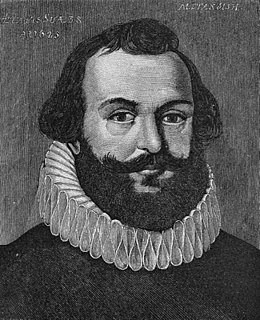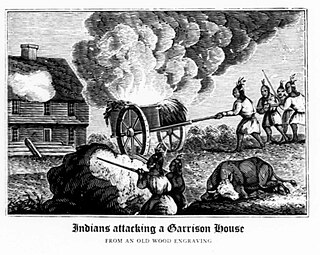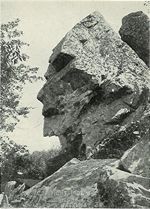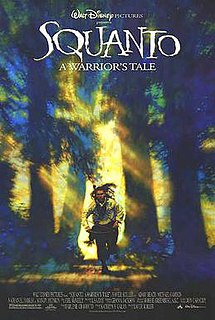
Myles Standish was an English military officer hired by the Pilgrims as military adviser for Plymouth Colony. He accompanied them on the Mayflower journey and played a leading role in the administration and defense of Plymouth Colony from its inception. On February 17, 1621, the Plymouth Colony militia elected him as its first commander and continued to re-elect him to that position for the remainder of his life. He served as an agent of Plymouth Colony in England, as assistant governor, and as treasurer of the Colony. He was also one of the first settlers and founders of the town of Duxbury, Massachusetts.

Plymouth Colony was an English colonial venture in North America from 1620 to 1691 at a location that had previously been surveyed and named by Captain John Smith. The settlement served as the capital of the colony and developed as the town of Plymouth, Massachusetts. At its height, Plymouth Colony occupied most of the southeastern portion of Massachusetts.

Metacom (1638–1676), also known as Metacomet and by his adopted English name King Philip, was chief to the Wampanoag people and the second son of the sachem Massasoit. He became a chief in 1662 when his brother Wamsutta died shortly after their father Massasoit. Wamsutta's widow Weetamoo, sunksqua of the Pocasset, was Metacomet's ally and friend for the rest of her life. Metacomet married Weetamoo's younger sister Wootonekanuske. No one knows how many children they had or what happened to them all. Wootonekanuske and one of their sons were sold to slavery in the West Indies following the defeat of the Native Americans in what became known as King Philip's War.

King Philip's War was an armed conflict in 1675–78 between Indian inhabitants of New England and New England colonists and their Indian allies. The war is named for Metacomet, the Wampanoag chief who adopted the name Philip because of the friendly relations between his father Massasoit and the Mayflower Pilgrims. The war continued in the most northern reaches of New England until the signing of the Treaty of Casco Bay in April 1678.

The Wampanoag, also rendered Wôpanâak, are an American Indian people in North America. They were a loose confederacy made up of several tribes in the 17th century, but today many Wampanoag people are enrolled in two federally recognized tribes: the Mashpee Wampanoag Tribe and the Wampanoag Tribe of Gay Head in Massachusetts.

Massasoit Sachem or Ousamequin was the sachem or leader of the Wampanoag tribe. The term Massasoit means Great Sachem.
Wamsutta, also known as Alexander Pokanoket, as he was called by New England colonists, was the eldest son of Massasoit Ousa Mequin of the Pokanoket Tribe and Wampanoag nation, and brother of Metacomet. His sale of Wampanoag lands to colonists other than those of the Plymouth Colony brought the Wampanoag considerable power, but aroused the suspicions of the Plymouth colonists. He was imprisoned for three days at Plymouth; he died shortly after release, causing tribal suspicion of the colonists. His death possibly contributed to King Philip's War of 1675. Wamsutta's name is memorialized in and around New Bedford, Massachusetts in various ways. He was honored in the naming of a United States Navy steamer in commission during the American Civil War between 1863 and 1865.
Corbitant was a Wampanoag Indian sachem or sagamore under Massasoit. Corbitant was sachem of the Pocasset tribe in present-day North Tiverton, Rhode Island, c. 1618–1630. He lived in Mattapuyst or Mattapoiset, located in the southern part of today's Swansea, MA.
Sachem and Sagamore refer to paramount chiefs among the Algonquians or other Native American tribes of the northeast. The two words are anglicizations of cognate terms from different Eastern Algonquian languages. The Sagamore was a lesser chief than the Sachem. Both of these chiefs are elected by their people. Sagamores are chosen by single bands to represent them, and the Sachem is chosen to represent a tribe or group of bands. Neither title is hereditary but each requires selection by band thus led.

Squanto: A Warrior's Tale is a 1994 Canadian-American period adventure drama film. It was written by Darlene Craviato and directed by Xavier Koller. It is very loosely based on the actual historical Native American figure Squanto, and his life prior to and including the arrival of the Mayflower in 1620. It stars Adam Beach as the lead role of Squanto. It was originally released theatrically on October 28, 1994 and was shot in Louisbourg and Cape Breton, Nova Scotia.

The Mayflower Council of the Boy Scouts of America serves the MetroWest and southeastern regions of Massachusetts.

The Great Swamp Fight or the Great Swamp Massacre was a crucial battle fought during King Philip's War between colonial militia of New England and the Narragansett tribe in December 1675. It was fought near the villages of Kingston and West Kingston in the Colony of Rhode Island and Providence Plantations. The combined force of the New England militia included 150 Pequots, and they inflicted a huge number of Narragansett casualties, including many hundred women and children. The battle has been described as "one of the most brutal and lopsided military encounters in all of New England's history." Since the 1930s, Narragansett and Wampanoag people commemorate the battle annually in a ceremony initiated by Narragansett-Wampanoag scholar Princess Red Wing.
Hobbamock was a Pokanoket pniese who came to live with the Plymouth Colony settlers during the first year of their settlement in North America in 1620. His name was variously spelled in 17th century documents and today is generally simplified as Hobomok. He is known for his rivalry with Squanto, who lived with the settlers before him. He was greatly trusted by Myles Standish, the colony's military commander, and he joined with Standish in a military raid against the Massachuset. Hobomock was also greatly devoted to Massasoit, the sachem of the Pokanoket, who befriended the English settlers. Hobomok is often claimed to have been converted to Christianity, but what that meant to him is unclear.
The New England Colonies of British America included Connecticut Colony, the Colony of Rhode Island and Providence Plantations, Massachusetts Bay Colony, and the Province of New Hampshire, as well as a few smaller short-lived colonies. The New England colonies were part of the Thirteen Colonies and eventually became five of the six states in New England. Captain John Smith's 1616 work A Description of New England first applied the term "New England" to the coastal lands from Long Island Sound to Newfoundland.

The Patuxet were a Native American band of the Wampanoag tribal confederation. They lived primarily in and around modern-day Plymouth, Massachusetts. The Patuxet have been extinct since 1622.

Wheeler's Surprise, and the ensuing Siege of Brookfield, was a battle between Nipmuc Indians under Muttawmp, and the English of the Massachusetts Bay Colony under the command of Thomas Wheeler and Captain Edward Hutchinson, in August 1675 during King Philip's War. The battle consisted of an initial ambush by the Nipmucs on Wheeler's unsuspecting party, followed by an attack on Brookfield, Massachusetts, and the consequent besieging of the remains of the colonial force. While the place where the siege part of the battle took place has always been known, the location of the initial ambush was a subject of extensive controversy among historians in the late nineteenth century.

Epenow was a Nauset from Martha's Vineyard, Massachusetts who became an early symbol of resistance to English explorers and slavers in the early 17th century.

David Thompson (1593–1628) was the first non-native settler of New Hampshire and the namesake of Thompson Island in Boston Harbor. He may have been a descendant of Sir Thomas Stewart, Master of Mar.
















